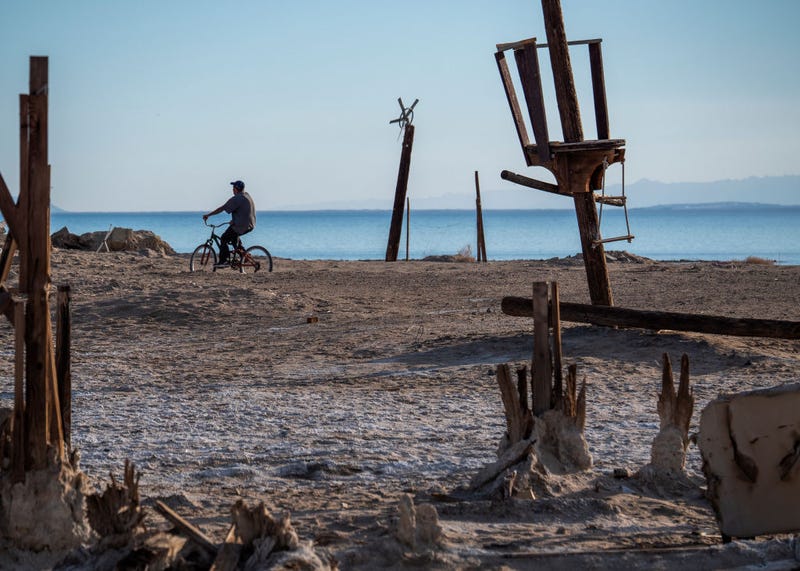
Hurricane Kay, a storm swirling around the Pacific, is expected to come as close as any hurricane has to the Southern California coastline since Hurricane Nora in 1997.
As the hurricane’s center “passes just offshore,” heavy rainfall poses a flash flooding risk in parts of Southern California, said the National Hurricane Center. However, a record-setting heat wave impacting the state is will also block Kay from moving directly into the Southwestern U.S., according to Yale Climate Connections.
As of Thursday, California was in the ninth consecutive day of a heat wave. Since last Wednesday, temperatures have been more than 100 degrees in some areas every day. High temperatures are expected to continue this weekend.
At the same time, Hurricane Kay is expected to track parallel to Baja, Calf., through Friday, said CNN. By 11 a.m. EST Thursday, Kay was a category 1 storm and had already come within 500 miles south-southeast of San Diego, Calif., said Yale Climate Connections.
That is closer to the U.S. than any Atlantic hurricane has reached so far this hurricane season, it said. Saturday marks the halfway point of the season.
“The hurricane is predicted to remain at hurricane strength until Thursday night, when it will be just 350 miles from San Diego,” according to Yale Climate Connections. “While Kay is not expected to reach California as a tropical storm, the state will see a rare constellation of hurricane-related effects – including rains both helpful and harmful.”
Effects could include flash flooding and landslides across the Baja California Peninsula through Saturday morning, said the National Hurricane Center. Flash, urban and small stream flooding could also occur across Southern California and Southwestern Arizona starting Friday.
CNN reported that Kay could push “what could be [a] record-breaking amount of moisture into Southern California and Arizona,” and will turn west, away from the U.S. coast.
“Kay’s most distinctive feature is its expansive plume of moisture,” said Yale Climate Connections. “The hurricane is embedded in a very moist air mass, with mid-level relative humidity around 70%.”
On Thursday evening, Kay is predicted to move over or near the sharp westward jut of mid-Baja, said Yale Climate Connections. The outlet added that the “sparsely populated area” is home to Mexico’s largest wildlife refuge – the El Vizcaíno Biosphere Reserve – and the town of Bahía Tortugas with a population of 2,300 people.
Hurricanes seldom make it to Bahía Tortugas, which was hit by Nora in 1997. According to the National Oceanic and Atmospheric Administration, Nora had weakened to a tropical storm by the time it “crossed into the Desert Southwest of the United States.”
Since 1850, Southern California has experienced gale-force winds from just seven tropical cyclones or their remnants. Waters off the coast are typically too cool to sustain tropical storms and hurricanes. Remnants of Hurricane Kathleen hit California in the late 1970s.


